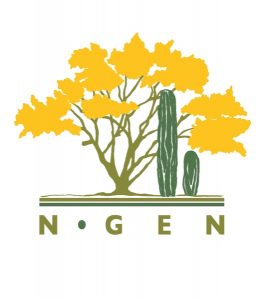
Title: Buffelgrass in the desert: Where do we go from here?
Convener: Kim Franklin
Overview of the session theme:
Many consider buffelgrass (Pennisetum ciliare) to be the greatest threat to the ecological integrity of the Sonoran Desert. In contrast, others value buffelgrass as a dependable forage species, capable of sustaining ranchers through periods of drought. In Sonora, native vegetation has been cleared at an alarming rate for the development of buffelgrass pastures, which are estimated to cover nearly 10% of the total area of Sonora. The long-term sustainability of these pastures is uncertain, with many ranchers experiencing rapid declines in productivity. Furthermore, research suggests that biodiversity continues to decline with time both in buffelgrass pastures and in areas that have been invaded by buffelgrass.
The situation is in some ways analogous to deforestation in the Amazon Basin, where nearly 10% of the forest has been cleared to make way for cattle. Yet there has been relatively little research on buffelgrass pasture development in northern Mexico, despite a tremendous need for data to guide land management decisions and conservation efforts. In this session we will share our perspectives, experience and knowledge of buffelgrass in northern Mexico with the goal of developing a prioritized list of questions to stimulate future research.
Overview of the session discussion:
The session was attended by a small number of people with expertise in buffelgrass and a large number of people wanting to learn about buffelgrass, so instead of a brainstorming session with the goal of developing a prioritized list of questions, the session became more of an introduction to this issue. I began by providing a concise introduction to the introduction of buffelgrass to the U.S. and then Mexico, with photographs of desmonte and a wide variety of buffelgrass pastures from across the state of Sonora. Several participants shared their knowledge, with the focus on the ecological aspects of the problem. As we approached the end of the session, I asked participants to give me their name and area of interest in regards to this issue. I hope to be able to facilitate several collaborative research projects with students, researchers, faculty at UNISON, UES, and other institutions.
Action items discussed during the session:
- List of attendees with an interest in conducting research on some aspect of buffelgrass rangelands in Sonora
- Further discussion with those with substantial expertise has led to plans to collaborate on ongoing grant-funded research on buffelgrass in Sonora.
Participants:
Sarah Richman
Sandy Lanham
Diana Moreno Espinoza
Rosa Maria Angulo Cota
Sergio Avila
Carolina Trujillo Lopez
César Hinojo Hinojo
Luis Ignacio Michado Encinas
Mirsa Bojórquez Ochoa
Morgan Gilmour
Itzel Hernández Morlán
Kenneth D. Madsen
Jan Emming
José Jesús Sanchez Escalante
Rick Williams
Martha Campbell
Marina Acuña
Milka Valenzuela
Emmanuel Bernal
Bárbara Larraín B.
Luala Armentz Méndez
José Raúl Romo León
Lara Cornejo Denman
Ana Karen Bustamante
José Emilio López Piña
Carlos H. Alcalá Galvan
Ciathia Cornejo
Detailed Notes:
The goal of the session was to discuss the ways in which ranchers and conservationists might work together to both increase and sustain rangeland productivity and conserve and restore biodiversity in rangelands.
Carlos Alcalá shared his extensive knowledge of buffelgrass and experience working with the ranching community. He noted the broad range of ecological conditions combined with an equally large range of management practices over the areas with buffelgrass in the Sonoran Desert. His most important questions in this regards are (1) what are the ecological and productive conditions of areas with presence of buffelgrass, and (2) what is the impact of different management practices on the ecological attributes and processes? To address the first question we would create maps of environmental characteristics such as climate, soils, surface water, vegetation, the productive condition of resources (e.g. forage availability) and wildlife, as well as the impact of current and historical land use over a broad swath of Sonora. The first question plays into the second as the impact of different management practices (eg. attle stocking rates, grazing systems, fencing, size and number of paddocks, soil and vegetation maintenance practices, development of water sources) will be dependent on ecological characteristics.
Carlos also noted that regardless of the scientific acknowledge on ecological impacts, landowners need to be convinced and motivated to incorporate management actions that promote ecological restoration. Land in Sonora is 95% privately owned, and no amount of scientific knowledge will be effective without buy-in from private landowners. We need to figure out how to motivate ranchers to improve management actions in favor of conservation.
Sandy brought up the cold tolerant variety of buffelgrass. Carlos informed us that this variety was developed at the University of Oklahoma and was being tested at several sites in northeast Sonora through INIFAP.
Rick Williams of the Northerh Jaguar Reserve presented the situation on the reserve and their perspective on buffelgrass. They’re in the business of conserving biodiversity, and do not want to live with buffelgrass. Ranches that they have purchased include buffelgrass pastures and they are considering allowing their neighbors to graze these pastures in an effort to control buffelgrass.
Raúl Romo-Leon shared his knowledge of buffelgrass in Sonora. He has worked on a variety of remote sensing and landscape ecology projects with buffelgrass. Jesús Sanchez Escalante also shared his perspective on buffelgrass and encouraged the next generation to address this issue.
Overall, this session became more of a panel discussion rather than a brainstorming activity, but many unfamiliar with this issue left with a better understanding of its complexity and gravity. Many connections were made. Expected products in the months and years to come include the attraction of new researchers to address the many unanswered questions about buffelgrass in Sonora, new collaborative research efforts, and one or more symposia on buffelgrass.


